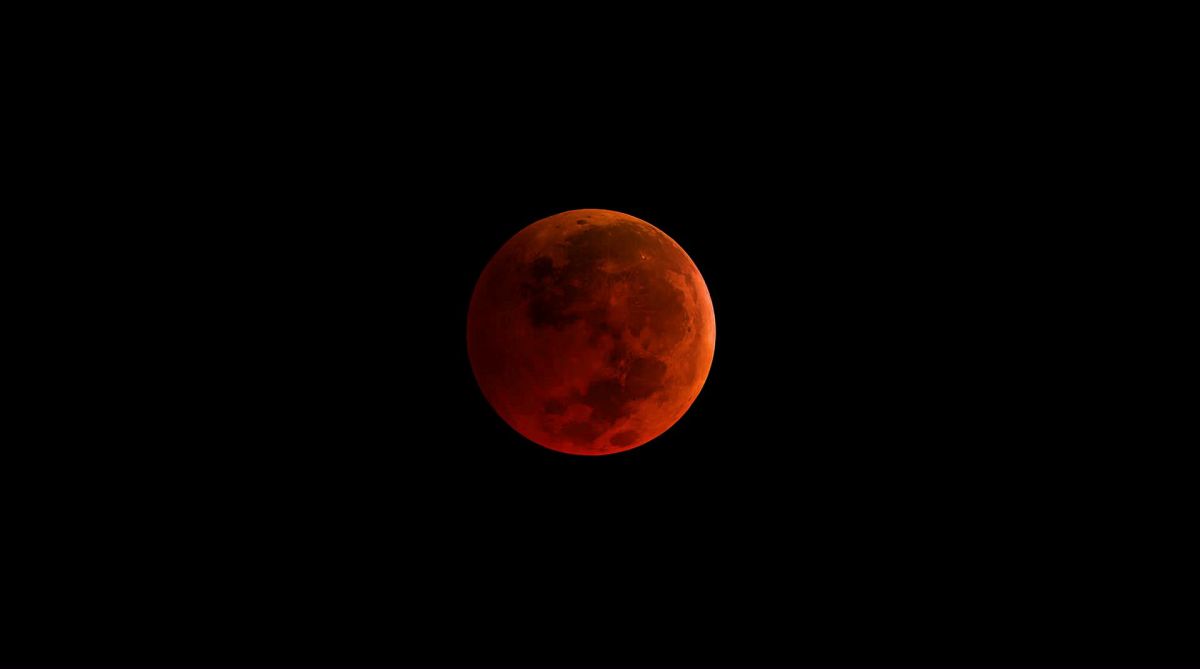Crisis Escalates
As Earth continues to spiral into a climate crisis, the recent revelation of March 2024 marking the 10th consecutive month of record-breaking heat should serve as an unignorable wake-up call.
Blue moon and Blood moon are not named after any scientific or astronomical logic or explanation, as one would expect, but are merely ‘scientific nicknames’.

The blood-red colour of the moon is the result of Rayleigh scattering principle. (Photo: NASA)
On 27 July, skygazers will get the treat of their life! Not only is the longest complete lunar eclipse due on Friday, but adding to the same is the fact that Mars will appear in its biggest and brightest self from Earth in about 15 years. At the eclipse’s height, the moon will be seen donning a blood red colour, and hence the name: blood moon. The lunar eclipse, from the beginning to the end, is expected to last for about 6 hours and 14 minutes, making it the longest one in the century. The total eclipse, on the other hand, can be observed for a staggering 1 hour and 43 minutes!
Now, people often find themselves searching around for answers when the concept of a blood-red moon is put forward. What is a blood moon? How is it different from a blue moon?
Let’s try to find the answers here!
Advertisement
Before understanding the differences between the two moons, it is important to realise that these names are not the result of any scientific or astronomical logic or explanation, but are merely, if you may, ‘nicknames’ of sorts.
In the late hours of July 27 and the early hours of July 28, what the skygazers will observe will be a blood moon. The blood-red colour of the moon is the result of an entire celestial series of consequent events. During a blood moon, the celestial arrangement is such that the Earth acts as a curtain between the Sun and the Moon. The moon receives less than no light, when this happens. The light rays from the Sun are scattered by the Earth. Now, thanks to Rayleigh scattering effect which states that scattering varies as per the wavelength of light, the seven colours of light get scattered by the Earth in such a manner that blue colour is scattered at the Earth whilst the red coloured light reaches the lunar surface. This scenario makes the moon appear blood-red, when looked at from the Earth and hence, the name being such.
Blue moon on the other hand has little, if not nothing, to do with colour — as one might initially expect. To put it simply, a supposed blue moon isn’t blue at all! Instead, it usually refers to the second full moon in a month. Yes! Two full moons in a month! Conventionally, a full moon occurs every 29.5 days. Now, our months, apart from the shortest month of February, are quite longer than the said span. Consequently, we end up experiencing a blue moon (or two full moons in a month), every two and a half years. The last blue moon was seen on January 31, 2018. It was in fact a super blue moon.
Then why call it ‘blue’ moon, you may ask? Well, the term is considered to be an extortion of the ancient term “belewe moon”, meaning the betraying moon. In ancient times, the presence of full moons was an indicator of seasons and their duration. Ideally, a season is supposed to have three full moons but, as mentioned, every two and a half years a blue moon would appear and cause troubles in the people’s seasonal calculations. Hence, the word betrayal is used to describe the ‘surprise’ appearance of the full moon. This logic also feeds into the usage of the idiom ‘once in a blue moon’, meaning ‘rarely’.
Now that the differences between blood moon and blue moon are settled, it’s time to hunt your binoculars for a better experience at skygazing tomorrow. The partial lunar eclipse will begin around 11.54 p.m., while the total lunar eclipse can be observed around 1 a.m., on Friday morning.
The next lunar eclipse is expected to occur in January 21, 2019, and another on July 16, 2019, which is also the 50th anniversary of the Apollo launch, the mission that helped humans reach the moon.
Advertisement